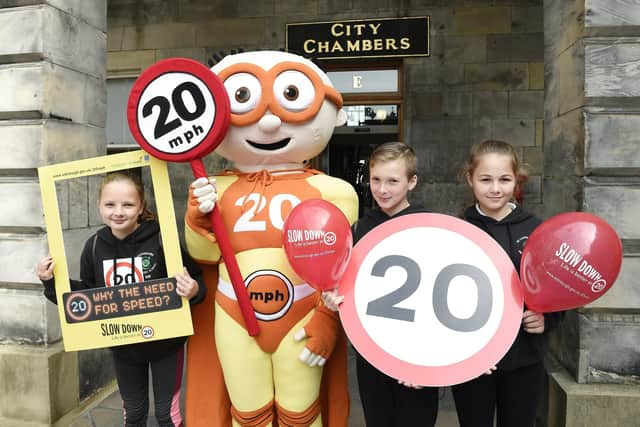Edinburgh traffic: Council should be able to fine drivers breaking 20mph speed limits, says councillor
and live on Freeview channel 276
Council-employed wardens should be able to hand out fines to motorists breaking Edinburgh's 20mph speed limits, Lib Dems say.
Current laws mean that although councils can issue penalties for breaches of parking restrictions and some other traffic regulations, only the police can enforce speed limits.But south of the border, Wandsworth council in London has just become the first in the UK to be given the power to fine drivers who break its 20mph speed cap in residential areas. It’s an a eight-month trial and all the money brought in by fines will be reinvested into road safety initiatives.
Advertisement
Hide AdAdvertisement
Hide AdNow Lib Dems in Edinburgh want to see a similar pilot scheme in the Capital. Group leader Kevin Lang said: "Excessive speeding and the concern around safety is one of the issues most frequently raised with me and I think many other councillors would say the same. We've repeatedly pressed the police to make this more of a priority and as a council we agreed to write to Police Scotland to ask them to do more around this. But with stretched police budgets I think we need to be realistic about how much the police can do. That is why I think this could offer an interesting new way of trying to improve road safety, particularly within residential areas where you often have more children out and about on local streets."
He has tabled motion for Thursday’s full council meeting, calling for the council to write to the Scottish Government to request that Edinburgh council be allowed to undertake a pilot study, similar to the Wandsworth scheme, in Scotland.
Edinburgh rolled out 20mph speed limits to residential areas across the city between 2016 and 2018 – helped by super-hero mascot The Reducer – and a consultation is currently under way on extending the lower limit to dozens more streets, including some main roads, where there is high-density housing or groups of shops or high cycle usage.
Cllr Lang said: “If the council was given right powers, this new initiative would allow the council to install speed cameras. What we want is to try to stop people speeding in residential areas, but if council cameras did find people speeding the council would be able to levy its own fines. You could have fixed cameras in areas where it’s known there are big problems. or you could have a network of wardens with mobile speed cameras who could go around certain communities.
Advertisement
Hide AdAdvertisement
Hide Ad"The hope is it would be self-financing, which would mean you could have additional wardens over and a above those employed for parking and other traffic violations, so we’re not taking people away form other important enforcement tasks. If it is a success it could be rolled out in other parts of the country. Given the level of concern I know exists, this could be a useful way of trying to get action at a time when we just don't see the police prioritising it in the way we would like.”


Recent research claimed Edinburgh’s 20mph speed limits had cut road deaths by almost a quarter and serious injuries by a third. Although average speeds had only fallen by 1.3mph after a year, the researchers found prior to the new limit, 45 per cent of cars in the city travelled above 25 mph, but a year later, the figure had dropped to 31 per cent. The study said the number of collisions in one year fell by 40 per cent to 367, and there were 409 fewer casualties – a drop of 39 per cent. A breakdown of the casualty figures showed fatalities dropped by 11 – or 23 per cent – and serious injuries fell by 33 per cent.